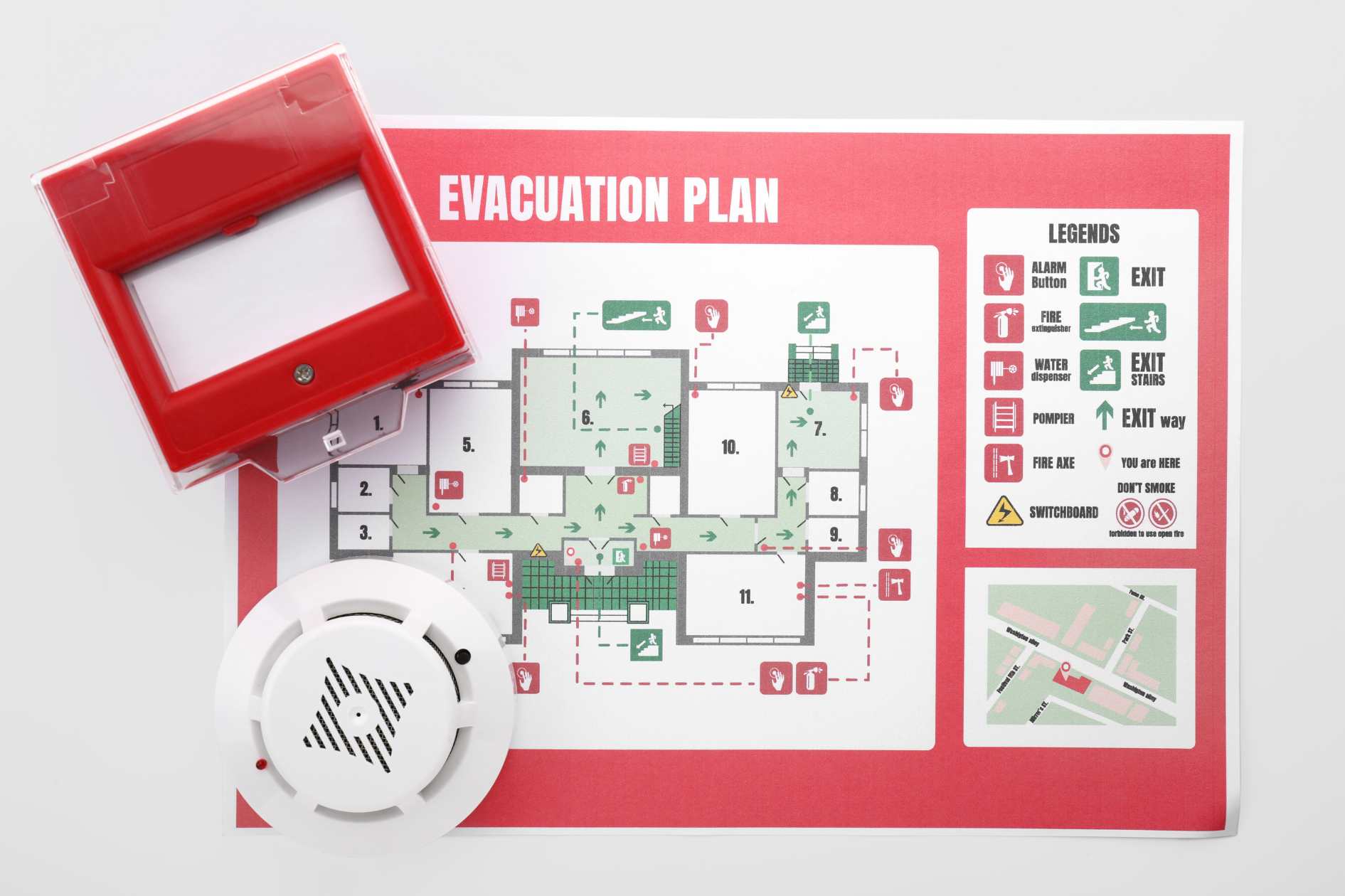10 Principles Of Good Website Usability To Make Your Website More Accessible
In today’s website-driven time, a user-friendly website is critical for any business. And that’s where the principles of good website usability come into play. In this blog, we’ll discuss the ten key principles to help ensure your website is a joy to use.
Also, read our previous blog – Good Website Usability: A Thing You Can’t Afford To Ignore
Let’s go!
1. Clear And Intuitive Navigation
Creating a website with clear and intuitive navigation is akin to designing a roadmap for your users. It ensures they can easily navigate your site, finding the information they need without frustration.
Importance Of A Well-Structured Menu
- Keep your menu simple and organized, with clearly labeled categories.
- Ensure that users can easily find what they’re looking for within a few clicks.
Implementing Breadcrumbs For Orientation
- Breadcrumbs are like a trail of breadcrumbs that show users where they are on your site.
- They provide context and help users navigate back to previous pages effortlessly.
Enroll – 30 Days Content Marketing Plan Course
2. Consistent Design And Layout
A consistent design and layout make your website aesthetically pleasing. It also reinforces user familiarity, allowing users to navigate and interact with your content.
Establishing Visual Consistency
- Use consistent colors, fonts, and styling throughout your website.
- A visually cohesive site is more comfortable for users to understand and trust.
The Role Of Style Guides And Templates
- Develop a style guide that outlines your website’s design standards.
- Templates ensure that every page on your site follows the same design principles.
Enroll – Learn SAP Course – Online Beginner Training
3. Mobile Responsiveness
In today’s mobile-centric world, a mobile-responsive design isn’t a luxury; it’s a necessity. By catering to users on smartphones and tablets, you expand your reach and offer a better experience.
Adapting To Different Screen Sizes
- Ensure your website looks and functions well on various devices, from smartphones to desktops.
- Responsive design adjusts the layout and content to fit different screen sizes seamlessly.
Mobile-First Design Strategies
- Consider designing your website with mobile users in mind first, as mobile traffic continues to rise.
- Prioritize essential content and features for mobile users to create a smooth experience.
Enroll – User Experience Design With Adobe XD (Course)
4. Fast Loading Times
Speed matters. Users are impatient, and a fast-loading website keeps them engaged and positively influences search engine rankings.
The Impact Of Page Speed On Usability
- Users expect websites to load quickly, and a slow-loading site can frustrate them.
- Google research found that the probability of bounce increases by 32% as page load time goes from one second to three seconds.
Techniques For Faster Loading
- Optimize images and videos to reduce file sizes.
- Use content delivery networks (CDNs) to distribute content more efficiently.
- Minimize unnecessary scripts and code.
Enroll – Google Keep (A Complete Guide) – Beginner (Course)
5. Readable And Scannable Content
Readable and scannable content is essential for keeping users on your site. Presenting information in a digestible format ensures that users can quickly find and absorb the content they seek.
Typography Best Practices
- Choose readable fonts and font sizes for both desktop and mobile users.
- Maintain adequate line spacing (line height) for improved readability.
Using Headings And Bulleted Lists
- Break up content with headings to make it easier to scan.
- Use bullet points for lists to enhance content readability.
Enroll today – Get Productive With G-Tools (Course)
6. Effective Use Of Images And Multimedia
Images and multimedia enhance your website’s visual appeal but mustn’t hinder usability. Proper optimization and accessibility considerations are critical.
Image Optimization For Faster Loading
- Compress images without sacrificing quality to reduce load times.
- Use responsive images based on the user’s device to serve the appropriate size.
Ensuring Accessibility For All Users
- Add alt text to images to make them accessible to users with disabilities.
- Provide captions and transcripts for multimedia content like videos.
Enroll – Camtasia Basics – Creating Videos Beginner (Course)
7. Clear Call-To-Action (Cta) Buttons
CTA buttons are the gateways to conversions on your website. Make them unmistakable, enticing, and strategically placed to guide users towards taking action.
Designing Compelling Ctas
- Make your CTA buttons stand out with contrasting colors and clear text.
- Use action-oriented language that tells users what to expect, such as “Sign Up” or “Buy Now.”
Placing Ctas Strategically
- Position CTAs where they make the most sense, such as at the end of blog posts or product pages.
- Ensure users don’t have to search for CTAs—they should be readily visible.
Enroll – Warrior Mindset Video Upgrade
8. Error Prevention And Handling
Nobody likes encountering errors on a website, especially when filling out forms or making transactions. By preventing errors and handling them gracefully, you can maintain a positive user experience.
Designing User-Friendly Forms
- Keep forms simple and request only essential information.
- Use real-time validation to alert users to errors as they occur.
Providing Clear Error Messages
- When users make mistakes, offer concise and helpful error messages.
- Include instructions on how to correct errors and move forward.
Enroll – Designing For Productivity In The User EXperience
9. Accessibility And Inclusivity
Web accessibility is not just a legal requirement in many places—it’s also the right thing to do. By making your website accessible to all users, you expand your audience and demonstrate your commitment to inclusivity.
Making Websites Accessible To All
- Follow the Web Content Accessibility Guidelines (WCAG) to ensure your site is inclusive.
- Consider users with disabilities, including those using screen readers, when designing your site.
Complying With Web Content Accessibility Guidelines (Wcag)
- WCAG provides a set of guidelines to make web content more accessible.
- Ensuring your website meets these standards is essential for inclusivity.
Enroll today – WordPress Course
10. User Feedback And Iteration
User feedback is a goldmine of insights for improving your website. By listening to your users and making iterative updates based on their feedback, you can continuously enhance the usability and overall user experience.
Encouraging User Feedback
- Provide easy ways for users to share feedback, such as contact forms or feedback buttons.
- Actively encourage users to report issues and offer suggestions.
Incorporating Feedback Into Updates
- Regularly review user feedback and prioritize improvements based on their input.
- Show users that their feedback is valued by implementing visible changes.
How To Implement The Principles Of Good Website Usability?
Let’s explore how to implement these principles effectively and make your website a user-friendly haven.
Usability Checklist For Website Redesign
If you’re in the process of redesigning your website or building a new one, here’s a handy checklist to ensure you’re incorporating usability from the ground up:
- Clear Navigation: Plan a straightforward menu structure with well-labeled categories.
- Responsive Design: Ensure your site adapts seamlessly to different devices.
- Fast Loading: Optimize images and reduce unnecessary scripts for speed.
- Readable Content: Use legible fonts and break up text with headings and bullet points.
- Effective CTAs: Design persuasive, visible call-to-action buttons.
- Accessibility: Follow WCAG guidelines for inclusivity.
- User Feedback: Include feedback mechanisms for users to share their thoughts.
Steps To Improve Existing Websites
If you already have a website and want to enhance its usability, here are some practical steps to follow:
- Usability Testing: Conduct regular usability tests with real users to identify issues.
- Data Analysis: Analyze user behavior data to pinpoint areas that need improvement.
- Content Audit: Review and update content to ensure it’s current, relevant, and easy to understand.
- Performance Optimization: Continuously optimize for speed and mobile-friendliness.
- Accessibility Review: Evaluate your website’s accessibility and make necessary adjustments.
Collaboration Between Designers And Developers
Effective collaboration between designers and developers is crucial to achieving good website usability. Designers should communicate their vision clearly, keeping user experience at the forefront. Developers should bring that vision to life while ensuring technical aspects align with usability goals.
The Role Of User Testing In Usability Enhancement
User testing should be an ongoing process, not a one-time event. Regularly test your website with real users, and remember these key points:
- A/B Testing: Experiment with variations of your website to see what resonates best with users.
- Iterative Design: Make incremental improvements based on user feedback and data analysis.
10 Principles Of Good Website Usability: Conclusion
A user-friendly website can set you apart from the competition in a digital landscape where users have countless choices. Consider the ten principles of good website usability above and apply them to your website. By doing so, you’ll create an online presence that users appreciate, trust, and return to time and time again.









